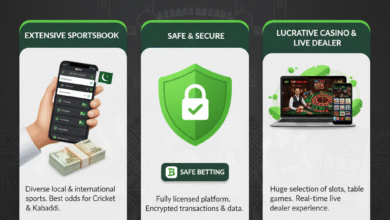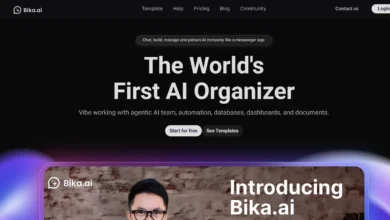
Identity Governance and Administration (IGA) is an integrated approach that integrates identity lifecycle management and access governance to enable organizations to control access to their systems so they can minimize security risks and ensure they remain compliant with regulations.
Issues concerning the control of access to systems and adherence to security policies are presenting more difficulties to modern organizations. As organizations grow their digital infrastructures, spread out their working forces in remote workplaces, classic methods of identity management fail to offer the much-needed comprehensive control measures in managing sensitive resources.
Such an integrated solution solves the shortcomings of disjointed identity management systems, whereby the process of provisioning users, reviewing access, and applying the policies is centralized to all business applications.
The potential and practical application of IGA solutions requires knowledge of the premises and operational basics, as well as effective methods. Companies that successfully execute these basics can dramatically enhance their security status, all the time simplifying administrative work and lowering the costs of operating their company.
Identity Governance and Administration (IGA)
Identity governance and Administration is a cybersecurity field that aims at managing identities and controlling user access authorization of organizations in the digital space. IGA integrates identity lifecycle management and access governance to achieve regulatory compliance and the authorization of suitable resource access permissions.
What Is Identity Governance?
Identity governance tracks and administers the digital identities of not only human users but also machine-based entities in an organization. It forms policies that regulate the access individuals get to the particular resources and manages the said permissions.
The governance framework answers three major questions as follows: who can access, what can be accessed, and why one should have such access. Identity governance enables organizations to block any unauthorized access and be able to provide their privileged users with the right access.
Digital identity types include
- Employee accounts
- Contractor access
- Service accounts
- Application identities
- System accounts
Identity governance does more than just user management. It involves the formulation of policies, analysis of risks, as well as monitoring of access patterns at all times to detect possible attacks on security systems.
Key Principles of IGA
This principle is the concept of least privilege, and it lies at the ingestible of an effective IGA application. Only the minimal access rights to the user are provided to them so that they may perform their functions.
RBAC reduces the number of permissions to be handled as users with similar roles are bundled together. Access rights are given to a role as opposed to giving the right to individual users in the organization, thereby lowering administrative overhead.
Segregation of duties eliminates conflicts of interest because a given user does not have excessive privileges. It means that several individuals have to accomplish delicate tasks according to this principle.
Access certification involves examining user privileges on a regular basis. Managers justify that their team members still require their existing access privileges and eliminate unnecessary access.
The timely access changes are provided with automated provisioning and deprovisioning. Authorization of new employees is a fast process, whereas existing staff also lose access upon departure.
Audit trails also keep extensive histories of requests, approvals, and updates. These logs facilitate semi-compliance and security inquiry.
Core Components of IGA Solutions
Identity Lifecycle Management handles user accounts from creation to deletion. This component automates account provisioning when employees join and ensures complete access removal when they leave.
Access Request and Approval Workflows streamline the process of requesting additional permissions. Users submit requests through standardized forms, and the system routes approvals to appropriate managers or resource owners.
Access Reviews and Certifications provide periodic validation of user permissions. The system generates reports showing current access rights and prompts managers to confirm or revoke permissions.
Role Management creates and maintains role definitions that align with business functions. Administrators can modify roles centrally, and changes automatically apply to all users assigned to those roles.
Policy Enforcement ensures access decisions comply with organizational rules and regulatory requirements. The system evaluates requests against predefined policies before granting access.
Reporting and Analytics deliver insights into access patterns, compliance status, and potential security risks. These tools help organizations identify over-privileged accounts and unused permissions.
Implementing IGA Solutions: Best Practices for Beginners
A proper choice of the platform, systematic implementation processes, and forward-thinking planning are aspects of successful IGA implementation since technical and organizational barriers need to be surmounted.
It is important that organizations reexamine their particular needs and consider the typical problems faced in the integration while undertaking the roll-out process. For those using the Atlassian suite and Jira, we recommend Multiplier.
Selecting the Right IGA Platform
Organizations ought to commence the task by carrying out a thorough evaluation of their existing identity infrastructure. It involves an inventory of the current user directories, applications, and access management tools.
Key evaluation criteria include
- Scalability: Platform capacity to handle current user volumes and future growth
- Integration capabilities: Native connectors for existing systems and applications
- Compliance features: Built-in reporting for regulatory requirements like SOX or GDPR
- User experience: Self-service portals and intuitive administrative interfaces
Other factors that companies need to consider include vendor support models and the schedule of implementation. Completion of the full deployment of most enterprise IGA platforms assumes 6-12 months.
The factors that should be taken into account when considering the budget are the expenses of the licensing, professional services, and maintenance. Organizations usually spend 20-30 percent of the investment funds on annual support and upgrades.
Technical requirements assessment stipulates analysis of API functions, compatibility of databases, and security certification. The platform must be compatible with contemporary authentication protocols and must be highly customisable in terms of deployment.
Steps for Successful IGA Deployment
Phase one involves establishing project governance and assembling cross-functional teams. Organizations need representatives from IT, security, compliance, and business units.
Core implementation phases:
- Discovery and planning (4-8 weeks)
- System configuration (8-12 weeks)
- User migration and testing (6-10 weeks)
- Production rollout (2-4 weeks)
Data migration involves a serious development of current user characteristics and rights access. Companies must develop elaborate scripts on migration and test them severally before deployment into production.
Policy build-up begins with simple access policies and finally integrates complicated approval policies. Business organizations will usually start with risky applications prior to implementation in all systems.
There must be user training programs that will be aimed at both the end user and the administrator. When the users are familiar with the process changes, self-service is able to decrease help desk tickets by 40-60 percent.
Testing phases have to incorporate security validation, performance benchmark testing, and user acceptance parameters. Rollback procedures must be maintained by the organizations over the period of the deployment process.
Common Challenges in IGA Implementation
Data quality issues represent the most frequent implementation obstacle. Legacy systems often contain duplicate accounts, outdated user information, and inconsistent naming conventions.
Organizations struggle with change management as employees resist new access request procedures. Communication strategies should emphasize security benefits and improved user experience.
Technical integration challenges arise when connecting disparate systems with different authentication methods. Custom connector development may extend project timelines by 30-50%.
Resource constraints impact project success when organizations underestimate the time commitment required from business stakeholders. Subject matter experts need dedicated bandwidth for requirements gathering and testing.
Scope creep occurs when organizations attempt to address all identity management gaps simultaneously. Phased approaches focusing on critical systems first reduce complexity and improve success rates.
The resulting performance problems can be exacerbated by large-scale processes, such as an automated provisioning exercise or access review. The realistic user volumes ensure that grave load testing bottlenecks are avoided in production.
Failure to ensure compliance whereby organizations solely serve to coordinate the technical implementation without considering the documentation of the policy and the conditions of the audit trail can lead to the development of compliance gaps.

















